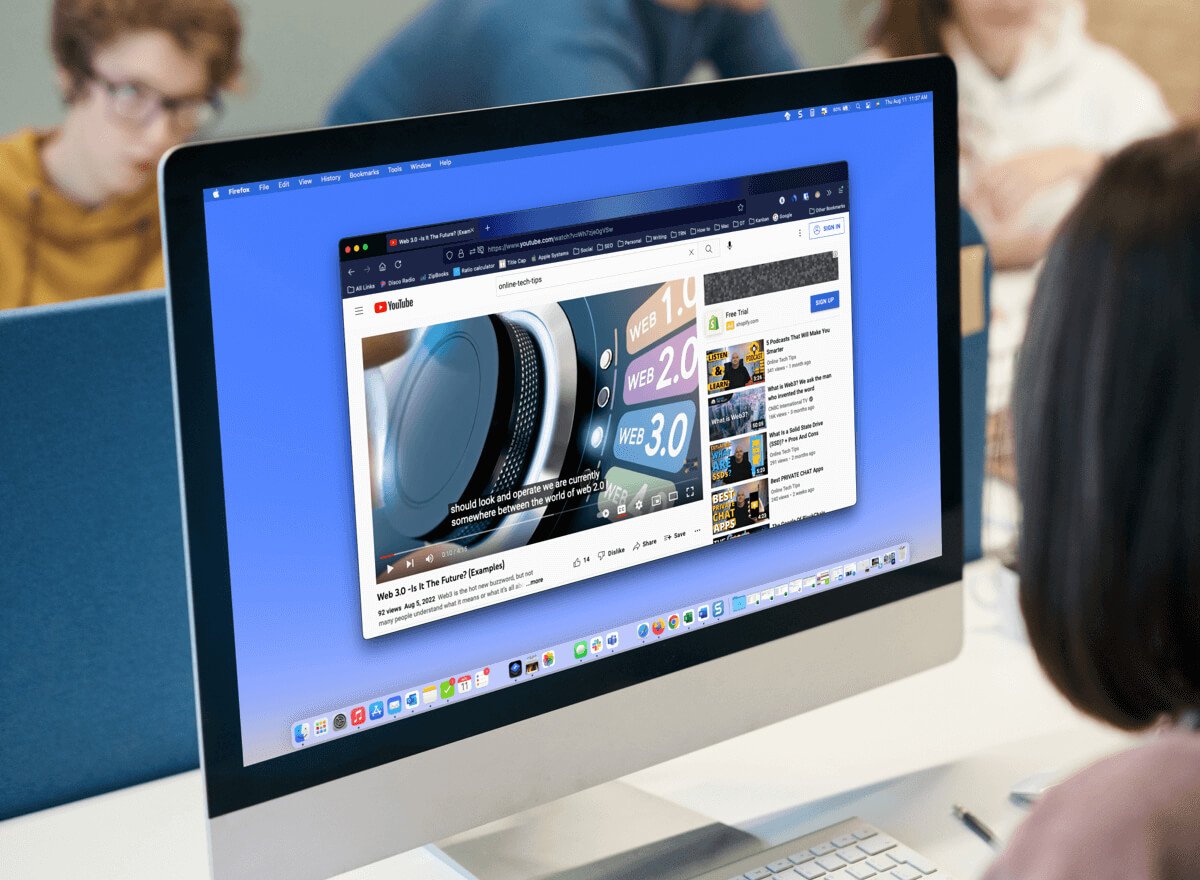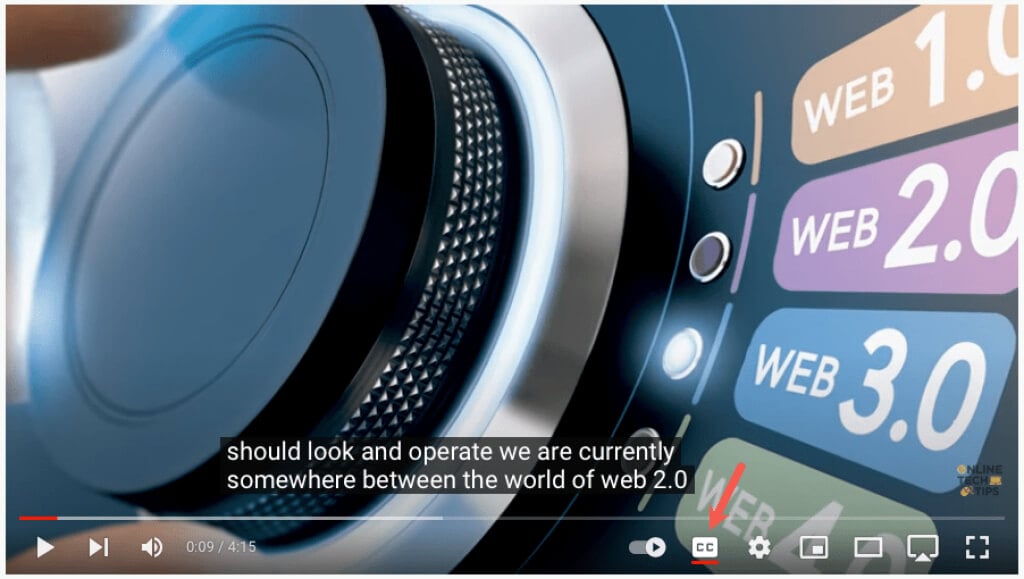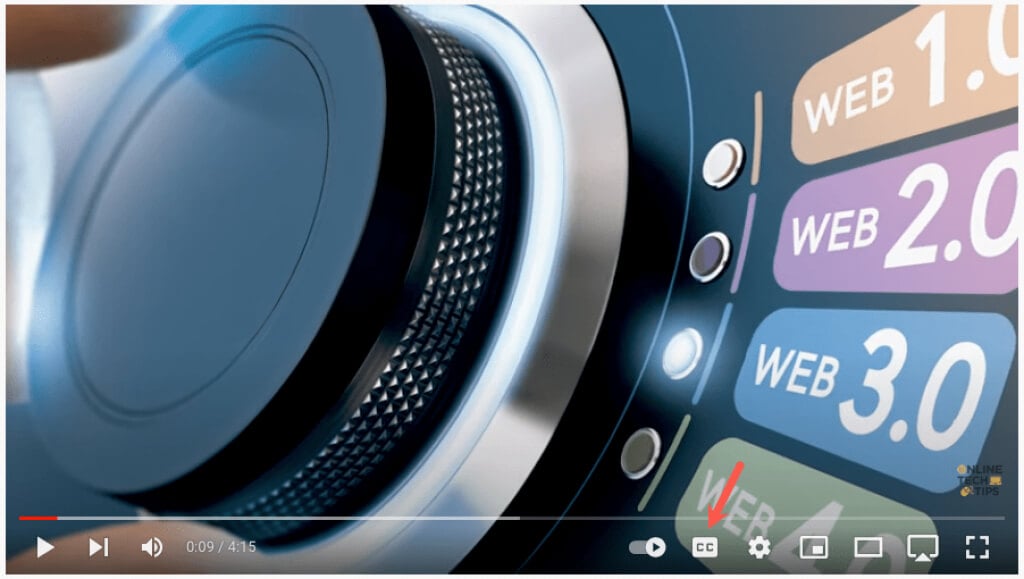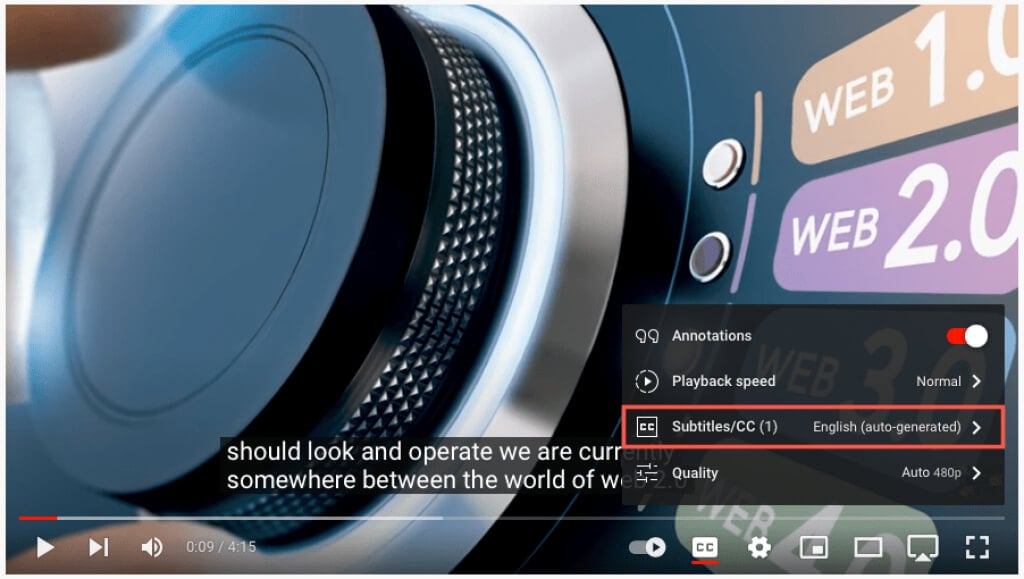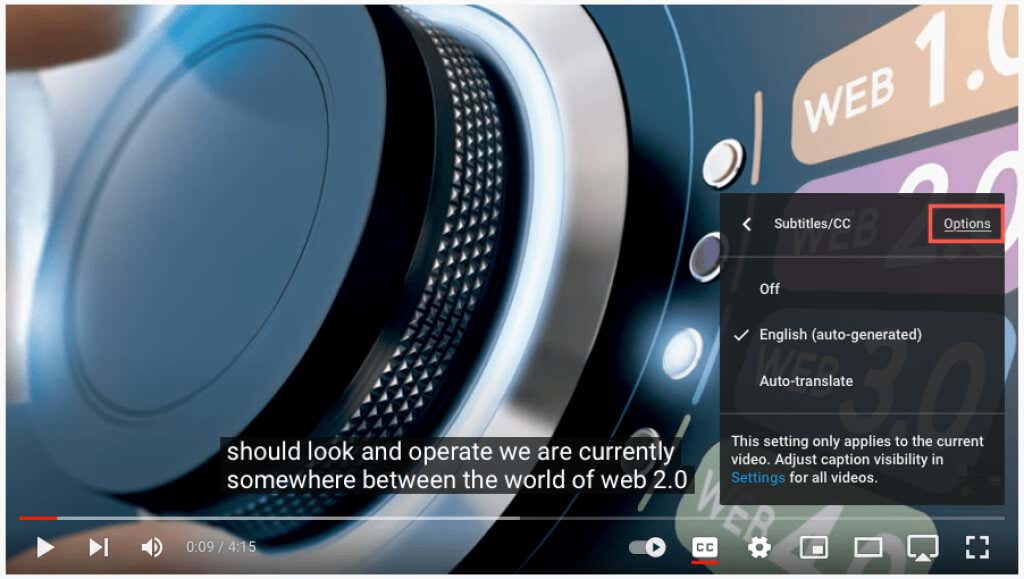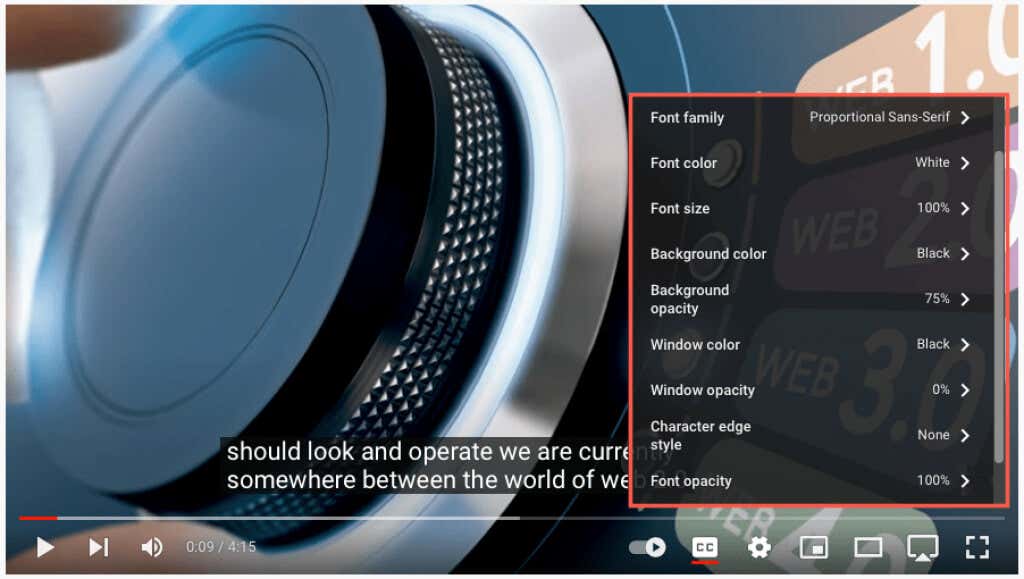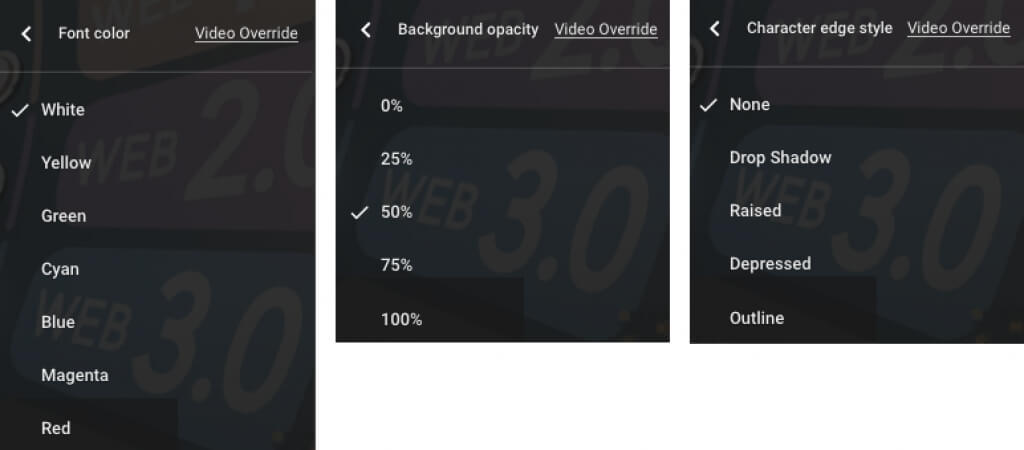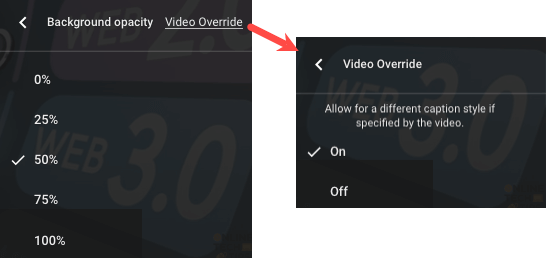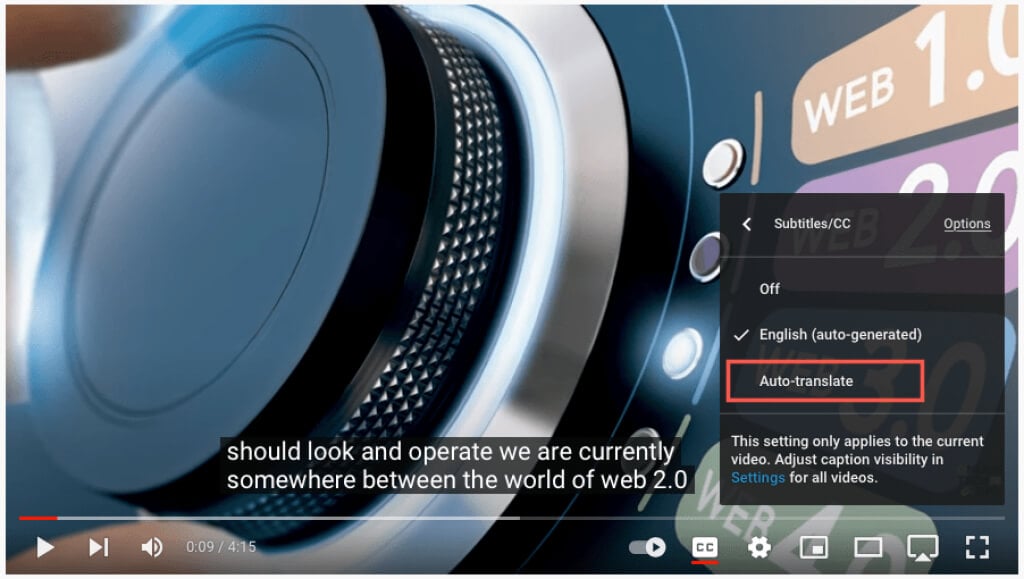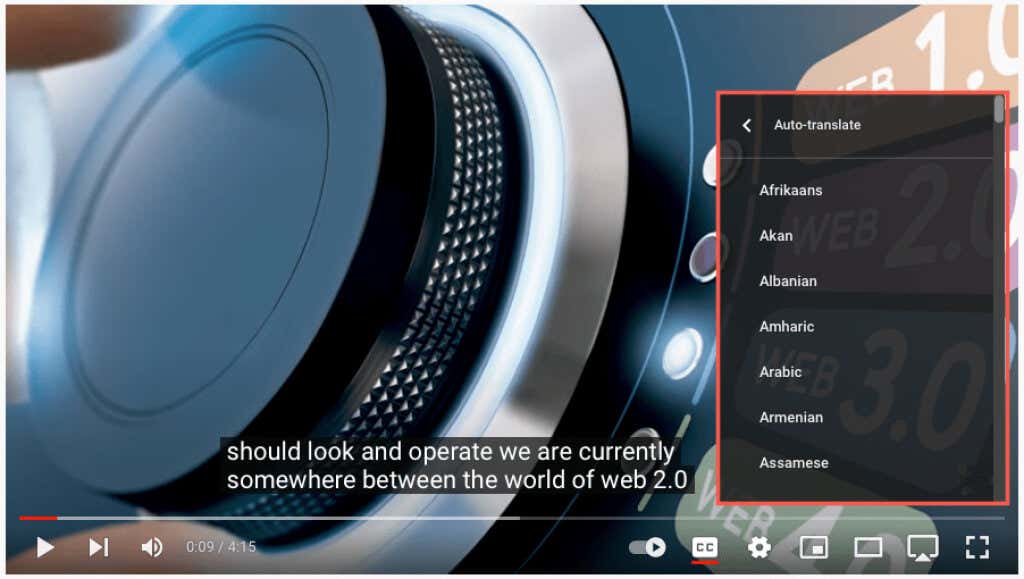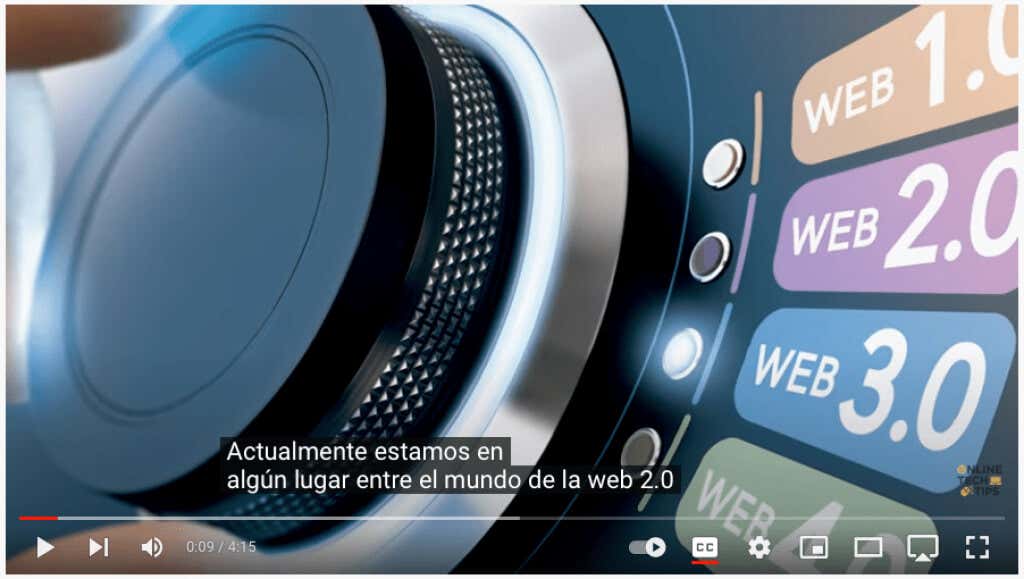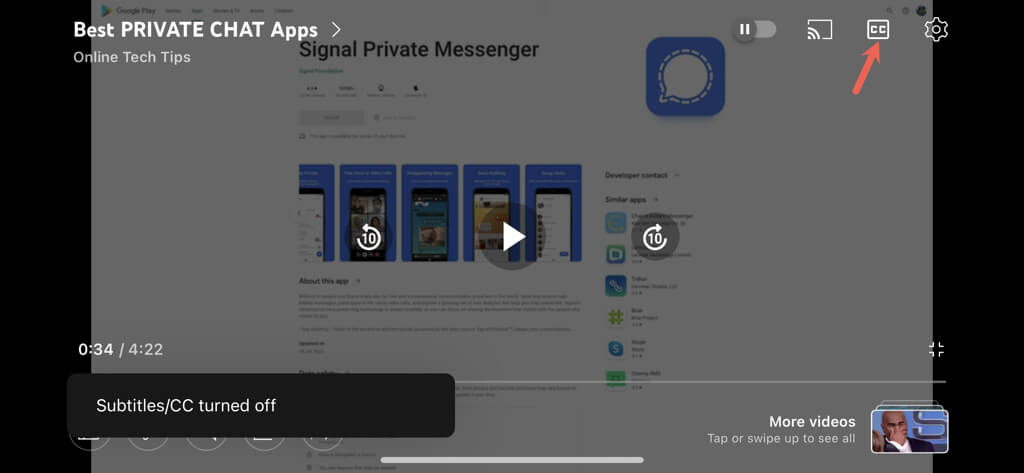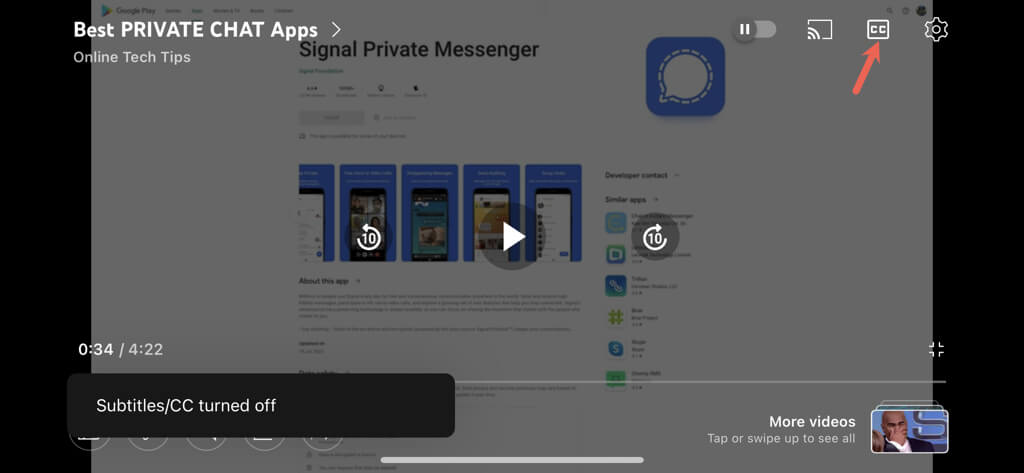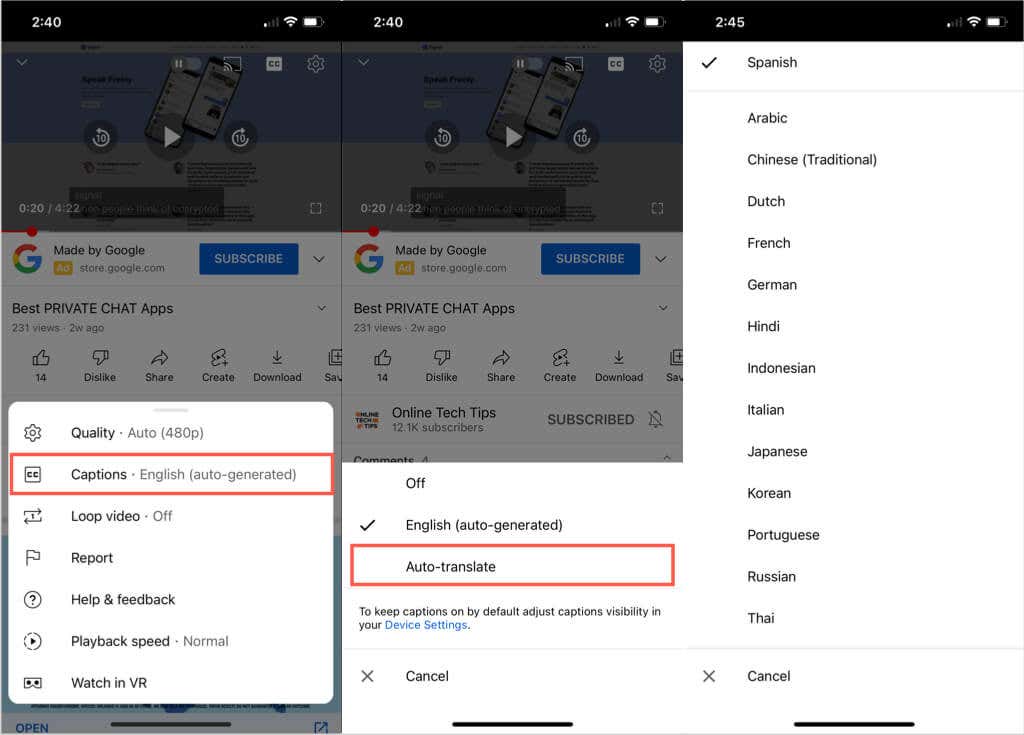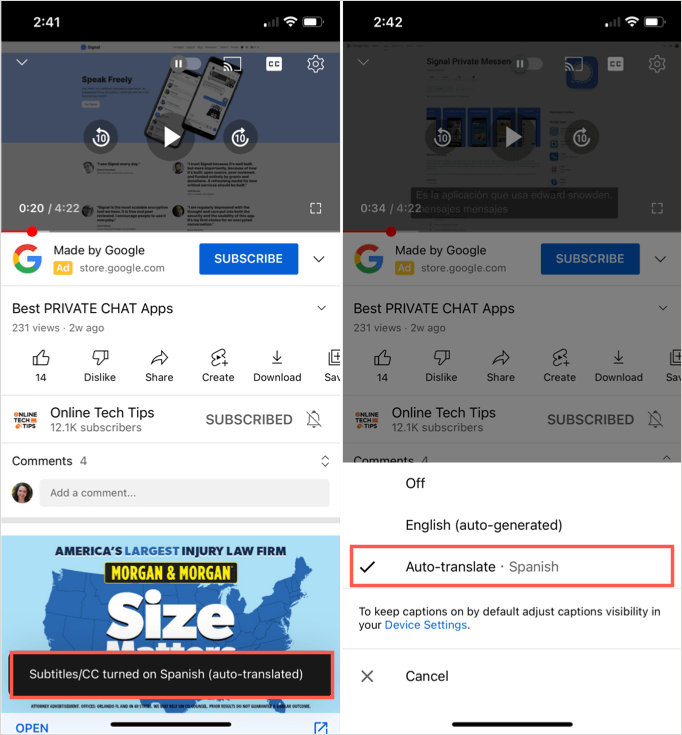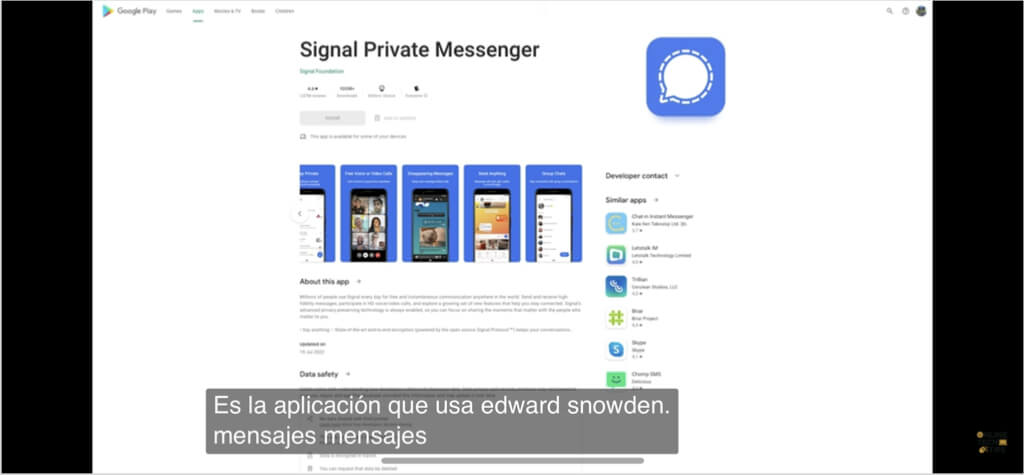Enjoy videos in your native language
Language or volume shouldn’t stop you from enjoying videos on YouTube. Using closed captions, you can see the real-time words as well as hear them. With the Auto-Translate feature you can translate captions into the language of your choice.
On both the YouTube website and in the YouTube mobile app, you can enable and use these handy features. Plus, if you use the YouTube site, you can customize the appearance of the captions.
Captions and Translations on the YouTube Site
Because Auto-Translate is part of the closed caption feature on YouTube, let’s begin with turning on and customizing the captions.
Enable Captions on the Web
Visit the YouTube site and select the video you want to watch. When it begins to play, select the Closed Caption (CC) icon at the bottom of the video.
You’ll see a red line appear beneath the icon when live captions are enabled. You should also see the words displayed at the bottom of the video.
To disable closed captions later, simply select the Closed Caption icon. This removes the red line from beneath and the caption window should vanish from the video.
Customize Closed Captions
YouTube gives you several ways to customize the appearance of the closed captions. This allows you to pick colors and adjust the opacity to fit your preference or the video at the time.
- Open the gear icon to the right of the Closed Caption icon at the bottom of the video.
- Select Subtitles/CC in the small pop-up window.
- At the top of the pop-up, choose Options.
- You’ll then see the following customizations. Select one to adjust it and then use the arrow on the top left to go back.
- Font family: Choose from a serif, casual, cursive, or small capital letter font.
- Font color: Pick from basic colors like white, red, or blue, or a brighter one like cyan or magenta.
- Font size: Adjust the font size from 50 to 400 percent.
- Background color: Pick from the same colors as the font options for the background. This is the area directly behind the words in the caption.
- Background opacity: Adjust the opacity for the background from zero to 100 percent.
- Window color: Like the background, you can change the window color, which is the entire caption area. Pick from the same color options as the font and background.
- Window opacity: Adjust the opacity for the caption window from zero to 100 percent.
- Character edge style: Choose a style like shadow, raised, depressed, or outline for the font edges.
- Font opacity: Adjust the opacity for the font from 25 to 100 percent.
- Reset: Revert all appearance settings to the defaults.
You should see any updates you make to the captions immediately. This lets you revert the change or pick a different option.
- Within each of the above settings, you’ll see a Video Override option at the top of the pop-up. If you want to override any caption or subtitle settings specified by the video with your own selections, pick Off.
- Select the gear icon to close the settings when you finish.
Enable Auto-Translate on the Web
Once you enable the closed captions, you can turn on the video translation feature and pick the language.
- Open the gear icon at the bottom of the video to the right of the Closed Caption icon.
- Select Subtitles/CC in the small pop-up window.
- Choose Auto-Translate.
- Then, select the language.
You can then use the arrow on the top left of the pop-up window to go back or the gear icon to close the settings.
Captions and Translations in the YouTube App
You can enable auto-captions and translations just as easily in the YouTube mobile app on Android and iPhone.
Enable Captions in the Mobile App
Open the YouTube app and select a video. When the playback starts, select the Closed Caption (CC) on the top right. This icon displays in both portrait and landscape mode.
You’ll see the icon highlighted in white and a brief message at the bottom of the screen that you’ve turned on closed captions.
To turn off the YouTube captions, simply select the Closed Caption icon again. This returns the icon to its original state, and you’ll see a short message that you’ve turned off the captions.
Enable Auto-Translate in the Mobile App
After you turn on video captions, you can enable the YouTube Auto-Translate feature.
- Select the gear icon at the top of the video.
- Pick Captions in the small pop-up window.
- Choose Auto-Translate and select the language.
You’ll see a brief message that you’ve enabled subtitles/closed captions in the language you selected. This setting also displays when you tap the gear icon and shows you the language you picked such as English, Spanish, or Portuguese.
You can then enjoy the video with real-time subtitle translations via the closed caption feature in either portrait or landscape view.
Helpful, Handy YouTube Features
If you want to watch videos but are without earphones and don’t want to disturb those around you or if you have a hearing impairment, just enable those automatic captions on YouTube.
Now instead of skipping videos because they’re in a foreign language, you can use the YouTube Auto-Translate feature.
Keep these helpful and handy features in mind when you watch your next YouTube video.
For more, take a look at tips for using Google Translate or how to edit a video for your own YouTube channel.

